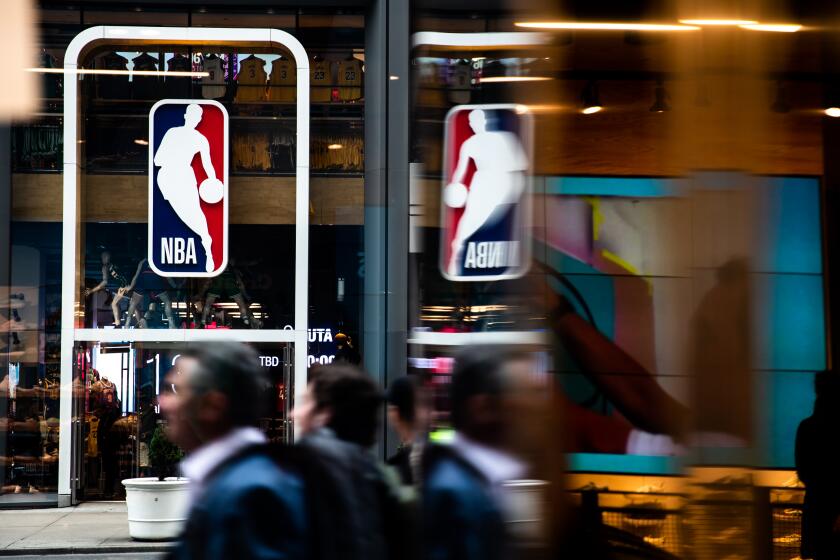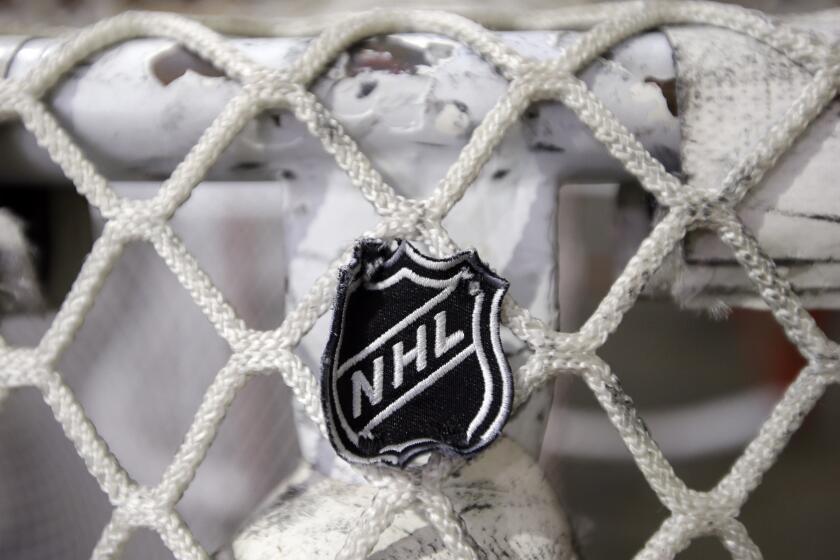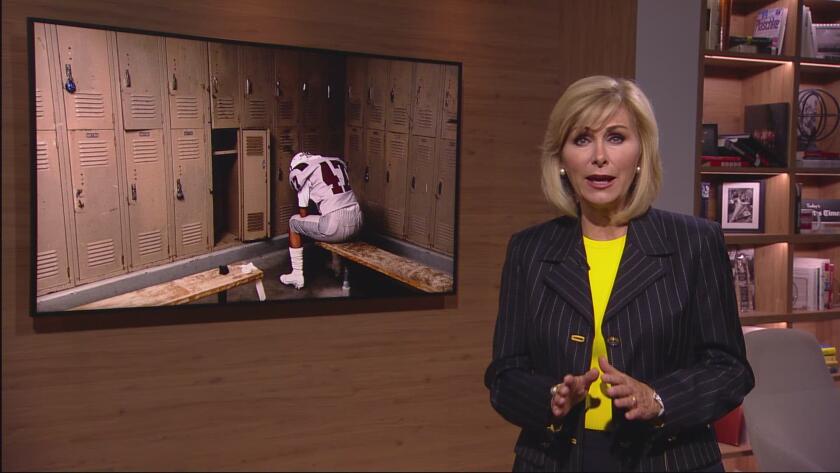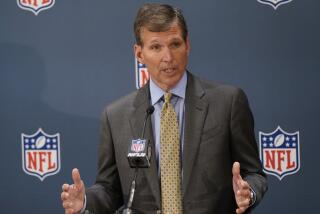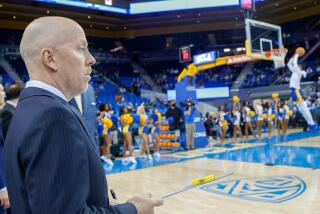Coronavirus makes locker rooms potential danger zones
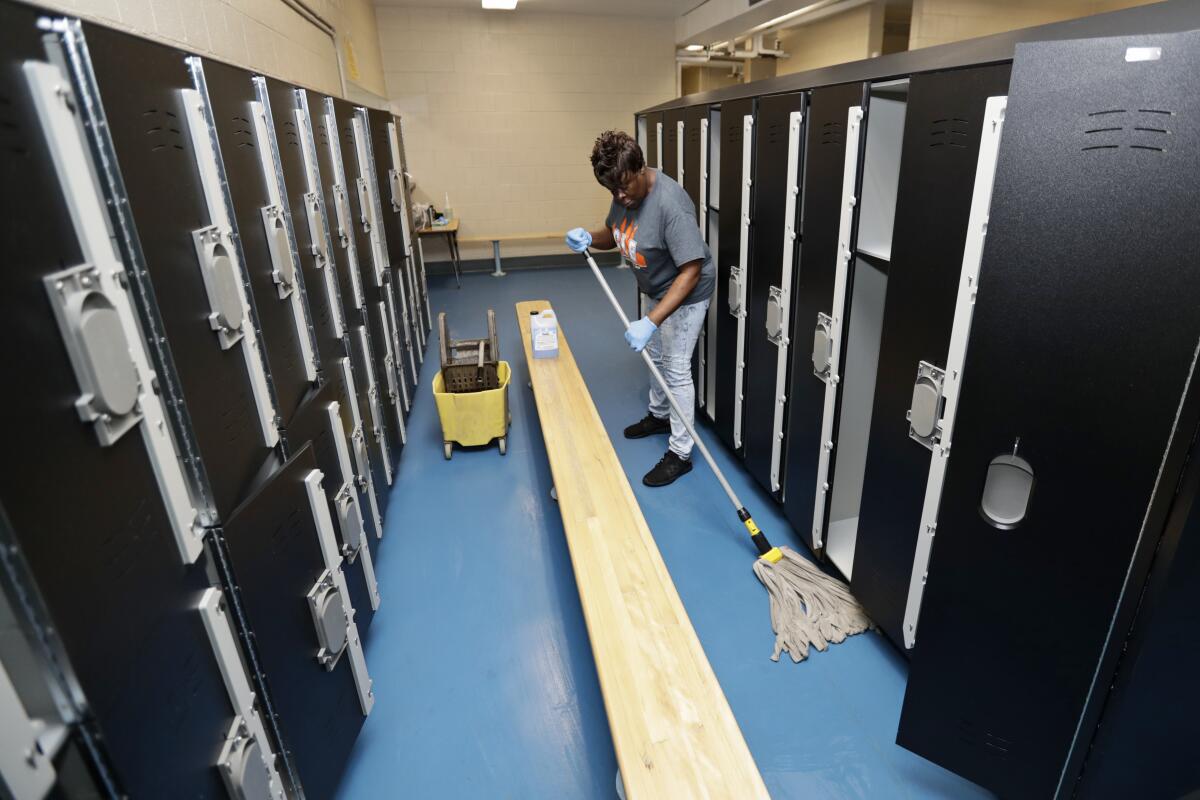
- Share via
Forget your old, romantic notions of the locker room — an irascible coach giving his pep talk at halftime or players drenched in champagne after a big win — because the coronavirus outbreak has changed all that.
Public health experts see something more akin to a giant petri dish, a confined space filled with sweaty clothes and shower steam, with coaches and players packed too close together.
In other words, a welcoming environment for COVID-19.
“This is a whole different ballgame,” says Dr. Armand Dorian, an associate medical professor at USC. “The potential for spread is high.”
As the NBA and NHL move toward resuming play and football gears up for training camp, league officials find themselves talking about “hospital-grade” disinfectants and moving lockers outdoors. Players might need to take turns getting changed in small groups.
As the NBA tries to figure what the rest of the season looks like, it has encountered threads that lead in all kinds of unexpected directions.
“Trust me, every day we’re on Zoom, we’re talking about the same thing,” Chargers running back Justin Jackson said. “Will this work? Will that work?”
The risk is even greater at high schools that cannot afford expensive cleaning equipment or big staffs, relying instead on a janitor or two. At Garfield High, coach Lorenzo Hernandez expects more than 65 kids to show up for football in the fall: “We want a safe environment … that’s definitely going to be a tough task.”
Another wave of the coronavirus could force drastic action, with pro leagues suggesting that athletes shower at home.
“Some teams I’ve talked to are trying to avoid the locker room altogether,” said Geoffrey Dreher, an assistant professor of orthopedic surgery at Johns Hopkins University. “They’ll bring their own equipment and meet out on the field.”
While physical contact in sports such as football and basketball is concerning, doctors know all types of athletes are vulnerable off the field. Bacteria and fungi thrive in humid, cramped spaces and can worm inside the body through cuts and scrapes, resulting in maladies far more serious than athlete’s foot.
The USC football team reported seven staph infections and four players hospitalized before the 2003 season. Former Clippers forward Blake Griffin missed part of the 2014-15 season for the same reason.
Around that time, the Tampa Bay Buccaneers paid millions to settle lawsuits brought by players who contracted MRSA. Kicker Lawrence Tynes alleged that at least five team and staff members contracted the antibiotic-resistant infection that season, his suit alleging that players regularly “used the same hot and cold tubs, soak buckets and other therapy devices” that were not “properly maintained, disinfected or cleaned, if at all.”
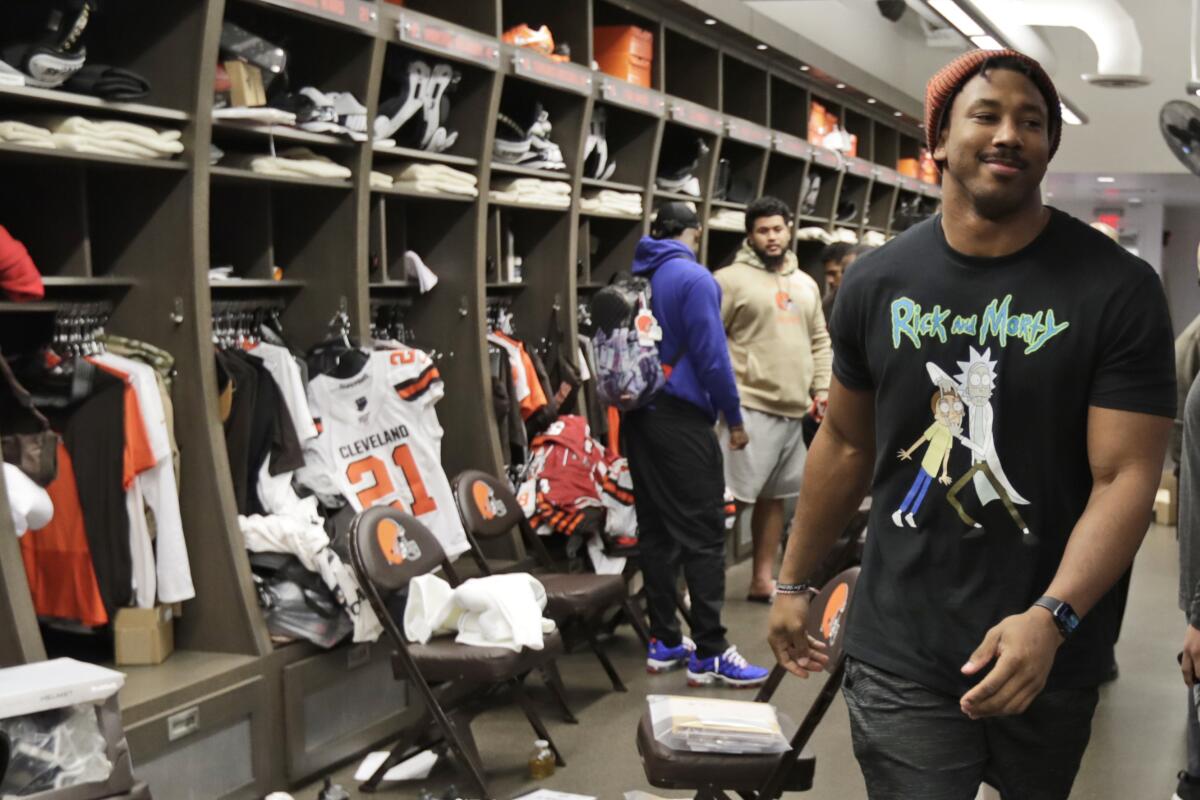
“Touch points” are a problem with COVID-19 because the virus, transmitted through respiratory droplets, can survive on common surfaces for hours or even days. Addressing other risks, Dorian uses a phrase that has become common in this pandemic: “Time, space, people, place.”
The professor, who also serves as chief medical officer at USC Verdugo Hills Hospital, is referring to the collective hours spent hanging around locker rooms before and after games and practices. The CDC warns any exposure longer than 15 minutes significantly boosts the chances of infection.
When the coach hollers at his team, he spreads droplets over a wider area. Same goes for players yelling or chanting to get themselves fired up.
Most athletes are young and healthy, which lowers their risk for becoming severely ill if they catch COVID-19. “I know my team, I know we’ve all been at home,” said Jordan McIntyre, who will be a senior receiver at Chaminade High in the fall. “I think we’re all going to be good.”
There is more concern about coaches and staff, especially those over 65, as well as people outside the team. “We recognize that players and personnel have family and household members who may fall into these vulnerable categories,” the NHL stated in a new set of coronavirus guidelines.
So what can teams do?
Medical experts suggest treating the locker room like a bathroom in your home — a bathroom you share with many, many strangers. Cleaning is vital.
It’s not clear yet how long the NHL training camp will be in session, leaving the start of the Stanley Cup playoffs to be determined.
Some pro and college teams already use ultraviolet light in addition to traditional disinfectants. Now the NHL is asking its franchises to seek advice from infectious disease specialists and have crews scour their facilities — including doorknobs, tables and counters — with an EPA-registered cleanser after every game or practice.
Even with these precautions, the league stated that “players shall be encouraged to shower at home wherever possible.” Commissioner Gary Bettman said: “Obviously, everything we’re focused on starts with health and safety.”
As baseball continues to haggle over a potential start, the league has similarly discouraged showering at the ballpark and has asked franchises to consider establishing temporary clubhouses “preferably outdoors or [in] areas with better ventilation.”
With football camp potentially beginning next month, USC is considering a number of options, including a phased approach that would have, say, defensive backs in the locker room for a few minutes, followed by linebackers, as other groups wait their turn. Even pro golf is making adjustments.
“We usually walk past each other constantly in the locker room,” Justin Thomas said after a practice round this week at the Charles Schwab Challenge. “You can’t just go to somebody and, like, fist bump like, “How you doing?” unless you Purell right away.”
No matter what strategy teams settle on, NFL Commissioner Roger Goodell recently distributed a league-wide memo warning that “no set of protocols can eliminate the risk of contracting COVID-19.” And plans could change as medical experts learn more about the virus.
“It’s just so unprecedented,” Jackson of the Chargers said. “You have so many people bringing in their two cents’ worth and it makes you reconsider everything you thought before.”
- Share via
The locker room is a perfect environment to spread the coronavirus. Reporter David Wharton tells LA Times Today host Lisa McRee what this means for the return of team sports.
Staff writer Jeff Miller contributed to this report.
More to Read
Go beyond the scoreboard
Get the latest on L.A.'s teams in the daily Sports Report newsletter.
You may occasionally receive promotional content from the Los Angeles Times.

